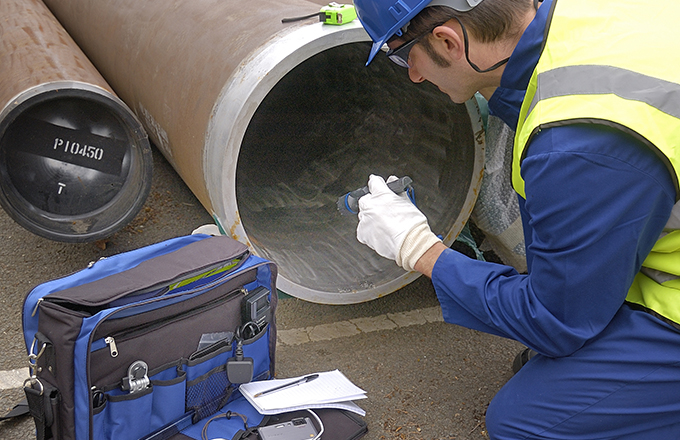Introduction:
Quality control and testing are crucial aspects of ensuring the reliability and performance of welded pipes in various industries. From manufacturing to installation, a rigorous quality control process helps identify any defects or inconsistencies in welded pipes, preventing potential failures and ensuring compliance with industry standards. In this article, we will explore the importance of quality control and testing in the production of welded pipes, highlighting key methods, standards, and procedures used in the industry.

Importance of Quality Control in Welded Pipes:
Quality control is essential in the production of welded pipes to maintain consistency, reliability, and safety. By implementing stringent quality control measures, manufacturers can identify and rectify defects during the production process, preventing issues that could compromise the integrity of the pipes. Quality control in welded pipes involves inspecting raw materials, monitoring the welding process, conducting non-destructive testing, and ensuring compliance with relevant standards and specifications.
Key Methods of Quality Control in Welded Pipes:
1. Visual Inspection: Visual inspection is the most basic method of quality control, involving the visual examination of welded joints for surface defects, cracks, porosity, and other imperfections. Qualified inspectors use visual aids such as magnifying glasses, borescopes, and cameras to assess the quality of welds.
2. Non-Destructive Testing (NDT): NDT methods such as ultrasonic testing, radiographic testing, magnetic particle testing, and liquid penetrant testing are used to detect internal and surface defects in welded pipes without causing damage to the material. NDT ensures the integrity of welds and helps identify any discontinuities that may compromise the pipe's performance.
3. Mechanical Testing: Mechanical testing involves assessing the mechanical properties of welded pipes, including tensile strength, yield strength, elongation, hardness, and impact resistance. By subjecting samples to mechanical tests, manufacturers can verify the structural integrity and performance of the welded pipes.
4. Dimensional Inspection: Dimensional inspection ensures that welded pipes meet the specified dimensional tolerances and requirements. By using precision measuring tools such as calipers, micrometers, and gauges, inspectors verify the outer diameter, wall thickness, length, and other critical dimensions of the pipes.
Standards and Procedures for Quality Control:
Several industry standards and procedures govern the quality control and testing of welded pipes to ensure consistency and reliability. Some common standards include:
- ASME B31.3: Process Piping Code
- AWS D1.1: Structural Welding Code
- API 5L: Specification for Line Pipe
- ASTM E213: Standard Practice for Ultrasonic Testing of Metal Pipe and Tubing
Manufacturers follow these standards and procedures to establish quality control protocols, inspection criteria, testing methods, and acceptance criteria for welded pipes. Compliance with industry standards is essential to guarantee the quality and performance of welded pipes in various applications.
In conclusion, quality control and testing play a critical role in the production of welded pipes, ensuring consistency, reliability, and safety in various industries. By implementing robust quality control measures, manufacturers can identify defects, maintain compliance with industry standards, and deliver high-quality welded pipes that meet the requirements of their customers.
Frequently Asked Questions (FAQs):
1. What is the purpose of non-destructive testing in welded pipes?
- Non-destructive testing is used to detect internal and surface defects in welded pipes without causing damage, ensuring the integrity and reliability of the pipes.
2. How are dimensional inspections carried out in welded pipes?
- Dimensional inspections involve using precision measuring tools to verify the outer diameter, wall thickness, length, and other critical dimensions of welded pipes.
3. What industry standards govern the quality control of welded pipes?
- Common industry standards include ASME B31.3, AWS D1.1, API 5L, and ASTM E213, which establish quality control protocols and testing procedures for welded pipes.
4. Why is mechanical testing important in the quality control of welded pipes?
- Mechanical testing helps assess the tensile strength, yield strength, hardness, and other mechanical properties of welded pipes, ensuring their structural integrity and performance.
5. How does visual inspection contribute to quality control in welded pipes?
- Visual inspection helps identify surface defects, cracks, porosity, and other imperfections in welded joints, allowing inspectors to evaluate the quality of welds and detect any abnormalities.
